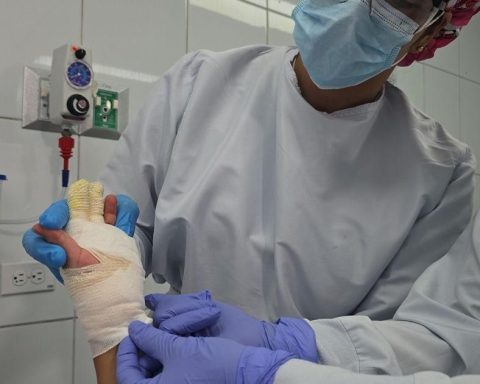Even though in the Government is processing several reforms before Congress, it is the project of the National Development Plan the one that will draw the roadmap for the economy and society in the next four years and that was already approved in its first debate in the Legislature.
Last week, the Center for Economic Studies Anif presented a series of observations to the project, and concluded that one of the problems facing the discussion of the Development plan it is that it is being done on a par with that of the other reforms, and that processing so many structural reforms in such a short time does not leave enough space for discussion and generates uncertainty.
(The opportunities and challenges of ‘open finance’ in Colombia).
“In general, the plan seems good to us and focused on what the change is. They are minor repairs, more than the plan, we are concerned about the reforms, which can complicate the development of the Plan”, questioned the president of Anif, Mauricio Santa María.
According to the economist, within the entire discussion of the National Development Plan and the structural reforms “we have forgotten the tax issue, but it is something that is still there, and it is strong”.
Santa María emphasized that when spending increases, then it is very difficult to cut it, and he recalled that in Colombia spending is around 22 or 23 points of GDPwhile tax revenues are around 14 or 15% of GDP.
(Ministry of Labor says that it will continue to subsidize job creation in SMEs).
Santa Maria recognized that the Medium Term Fiscal Framework proposes a path of deficit reduction, “but that begins to materialize from 2024, but especially from 2026, when the government will no longer be”.
This analysis was presented by Santa María in the framework of the seminar ‘The proposed route’, organized by the entity last Friday at the University of Medellín.
For the president of Anif, who was also director of the National Planning Department (DNP) between 2012 and 2013, although the objections are “minor”, there are some criticisms in relation to the goals, the process that the Plan is undergoing and the focus on some sectors.
(Government against electricity: attempts to lower tariffs).
“We are a bit concerned about the size of the Plan, it has 300 articles of which 282 were approved by ‘desk’ last week, and that is terrible because there has been no discussion. But what worries the most is that during the process of Congress, more articles are always put into it. And it will probably be the Development Plan with the most articles in history, and we will have to see if that is good or badSanta Maria said.
The president also questioned the goals of the National Development Plan, which projects a potential growth rate of 2.7% and at the same time an average unemployment indicator of 9%.
“That will not happen, growing at 2.7% unemployment will not reach 8.9%. We know that growing beyond 3.5% is difficult, but the Development Plan is something aspirational, we should make it more difficult, but also consistent with the goals of reducing unemployment and poverty”, indicated the president of Anif.
(‘We have to identify which tasks weigh more’: Minagricultura).
In addition, the economist expressed his concern about the creation of new subsystems and funds, which in the future would be difficult to eliminate and would become permanent expenses. He also described as negative the article that proposes a direct turn to the ADRES, and assured that it falls short in sectors such as infrastructure and education, especially primary and secondary.
“Although there is an important emphasis on tertiary roads and fluvial transport, there are very few mentions of investment in megaprojects, which are key to the development of the country and the regions. It would be useful to launch the 5G works program”, indicated the president of Anif. In addition, he proposed to use the royalties resources in high-impact projects.
Anif also stressed that the exclusively multisectoral approach in the Plan is impractical for implementation and for proper monitoring of the use of allocated resources.
In the framework of the event was also present the deputy general director of Prospective and National Development of the DNP, Juan Miguel Gallego, who explained the major components that bring the bases of the National Development Plan and the lines of investment to make the roadmap for the next four years a reality. Unlike other development plans, that of the Government of Gustavo Petro It does not have a sectoral perspective, but is based on five major strategies.
(EPS will have a new role after health presentation: from ensuring to managing).
“From the National Development Plan we make great bets for sustainability and a productive economy through reindustrialization. Our challenge is to double investment in research in Colombia and focus on clean energy in an orderly process of energy transitionGallego said.
One of the novelties in the draft of the National Development Plan 2022-2026 is that it is structured around five strategies or ‘transformations’, as the Government has decided to call them.
(Contributions to the Solidarity Fund proposed in the pension reformhe).
These are ordering of the territory around the water; human security and social justice; human right to food; productive transformation, internationalization and climate action; and regional convergence.
In addition, the articles recognize Total Peace, the actors for change and macroeconomic stability as transversal axes.
LAURA LUCIA BECERRA ELEJALDE
Journalist Portfolio

















